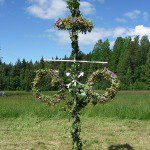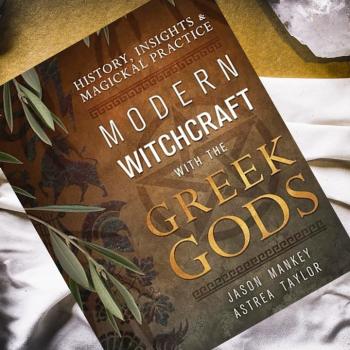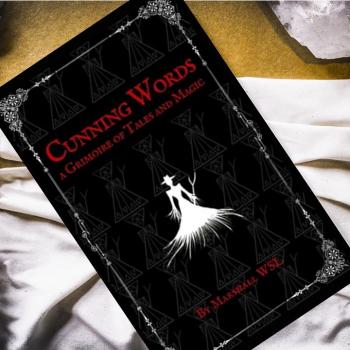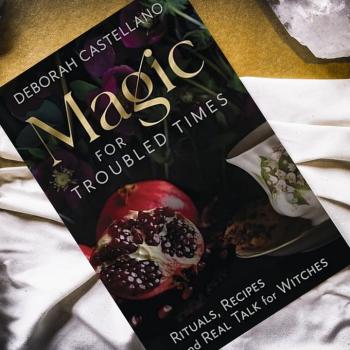 What can a naturalist celebrate in May?
What can a naturalist celebrate in May?
This post is part of Naturalistic Traditions, a column exploring naturalism in Pagan ways. This column will cover seasonal celebrations, historical and contemporary movements, and ritual practices.
Natural cycles
May 4th is a Cross-quarter. That is, it is the midpoint between the previous equinox and the upcoming solstice. As such, it is one of eight stations in our planet’s annual journey around the sun.
For those in the Northern Hemisphere, spring is well and truly come and summer is around the corner. Flora is bursting to life even in the most northern climes, and fauna frolicks in the verdure.
Those in the Southern Hemisphere experience the opposite, as autumn passes into winter.
The lunar phases in May see the full moon on the 6th, and the dark moon on the 21st.
Neopagan traditions
In the Northern Hemisphere, this time is traditionally celebrated in the Neopagan Wheel of the Year as Beltane. According to Nichols (2009), the name derives from the Irish Gaelic Bealtaine or the Scottish Gaelic Bealtuinn, for “Bel-fire”, the fire of the god of light, Bel, Beli, or Belinnus. Nichols asserts that on this day, Druids kindled the “need-fires” on beacon hills, and these had healing properties for those who leaped through them. Cattle would also be driven between two such fires before being taken to their summer pastures.
Beltane is also reputed as a day of unabashed sexuality, visible in the phallic symbolism of dancing round the maypole and riding the hobby horse. Other customs include “beating the bounds” of one’s property by walking its circuit (Nichols, 2009).
Glenys Livingstone of PaGaian, a naturalistic tradition revering the Goddess as a metaphor for the Cosmos, recommends the ritual celebration of beauty, as in the following call and response:
Celebrant: “Name yourself as the Beauty, whom She desires – the Beloved. Speak if you wish, of the Beauty that you are, or simply show us. Let us welcome your Beauty.”
Each one: (wording as you wish … this is a suggestive, and presenting object or photo of Beauty,or describing, as you speak: “I am this Beauty”. AND/OR “I am the Beauty of … . I am the Beauty whom She (the Cosmos/Universe) desires.“ (Put your object or photo on the altar)
Response: Welcome, we saw you coming from afar, and you were beautiful. We saw you coming from afar, and you are beautiful. (Livingstone, 2008)
She also finds this a particularly appropriate time to use the well-known Charge of the Goddess as an invocation: “all acts of love and pleasure are my rituals.”
Jon Cleland Host of the Naturalistic Paganism yahoo group suggests making Maybaskets of flowers, running barefoot in the grass, washing one’s face in the morning dew, and writing romantic poetry.
Beltane can be timed to the Cross-quarter, or more traditionally to May 1st (May Day).
Civic and scientific traditions
 May 16th is Love a Tree Day. Yes, it’s a real holiday (what a great idea, eh?). Check out a list of the five best ways to celebrate Love a Tree Day.
May 16th is Love a Tree Day. Yes, it’s a real holiday (what a great idea, eh?). Check out a list of the five best ways to celebrate Love a Tree Day.
On Carl Sagan’s Cosmic Calendar, which maps the entire history of our cosmos onto a single year, the universe has been swirling since the Big Bang on January 1st (13.7 billion years ago). Now, on May 11th, comes the formation of the Milky Way (8.8 billion years ago). The cosmos will continue to ferment until September, when the next big event is the emergence of our sun.
Many more days to celebrate can be found here.
And, of course, don’t forget Mother’s Day (May 13th)!
About the author
B. T. Newberg has been practicing meditation and ritual from a naturalistic perspective for eleven years and counting. After experimenting with Agnosticism, Buddhism, Contemporary Paganism, and Spiritual Humanism, he currently combines the latter two into a dynamic path embracing both science and myth. He is the editor of a community blog for naturalistic spirituality called Humanistic Paganism, which just published an anthology called Year One with over a dozen contributing authors. After growing up in Minnesota, and living in England, Malaysia, and Japan, B. T. Newberg currently resides in South Korea with his wife and cat.
References
Livingstone, G. (2008). PaGaian Cosmology. New York: iUniverse.
Nichols, M. (2009). Candlemas: The light returns. The Witches’ Sabbats. www.thewitchessabbats.com.














